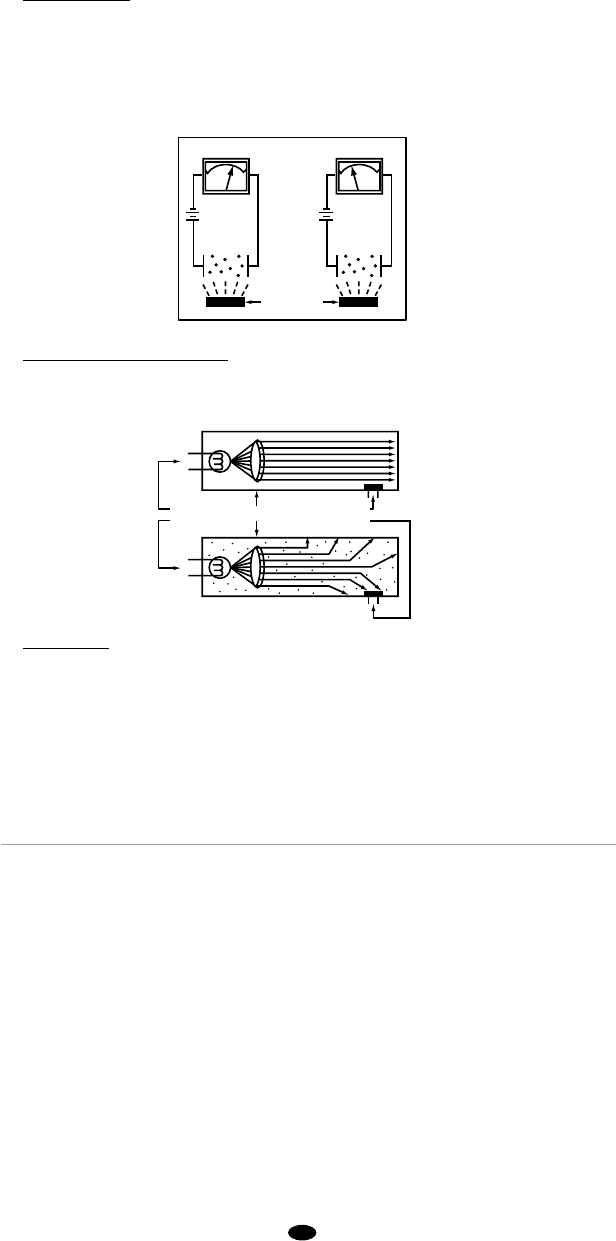
b. Alarm Types
• Ionisation (Ion) alarms are the most common type and provide early detection,
especially against fast flaming fires. Most suitable for dining and living room
areas. Ion alarms contain 0.9 microcurie of Americium 241, a radioactive material.
UK Home Office and BS5839 Pt6 recommend however, that optical alarms are also
used especially in locations where steam or cooking fumes, from a nearby room
could cause nuisance alarms.
No one type of alarm is considered suitable for all locations.
•
Optical (Photo-Electric) alarms are increasingly used and are less prone to nuisance
alarms from cooking fumes. They are therefore the recommended type in BS5839
Pt6, for fitting near kitchen areas and on escape routes/circulation spaces.
• Heat alarms are for use in areas where Ion or Optical smoke alarms would be
unsuitable e.g. kitchens, boiler rooms, garages. However, they must always be
used interconnected to smoke alarms – do not use in isolation. (They will typically
go into alarm when the temperature reaches 57°C.) Suitable for new Building
Regulations applicable 1/7/2000 regarding use in kitchens.
4. How to Operate/Test the Alarm
a. Operation and L.E.D. Status
• When your alarm is correctly installed to the mains supply, the green L.E.D. light
will be on. The red L.E.D. will blink every 30-40 seconds to indicate the sensor is
operating correctly. If the alarm senses products of combustion, it’s 85dB horn will
be activated. The red L.E.D. will flash rapidly on the alarm sensing smoke/heat.
(Other interconnected alarms will also sound to warn those in other parts of the
property.) This will continue until the sensor chamber is clear.
In the case of a heat alarm, it will be triggered when the temperature reaches 57°C
and return to it’s standby mode when the temperature drops to normal levels. On
optical alarms if the red L.E.D. blinks every 30-40 seconds and the alarm chirps
inbetween, it indicates failure of the sensing chamber.
Regularly check and ensure that the green L.E.D. is lit – if not, check the consumer
unit/circuit breaker connection. As with previous point above, if in doubt, consult
an electrician or your Landlord.
Radio Active
Material
+
-
Clear Air
+
-
Smoke
Smoke
Particles
+
+
+
-
-
Light
Source
Photosensitive
Cell
Lens
Clear Air
Smoke
3












